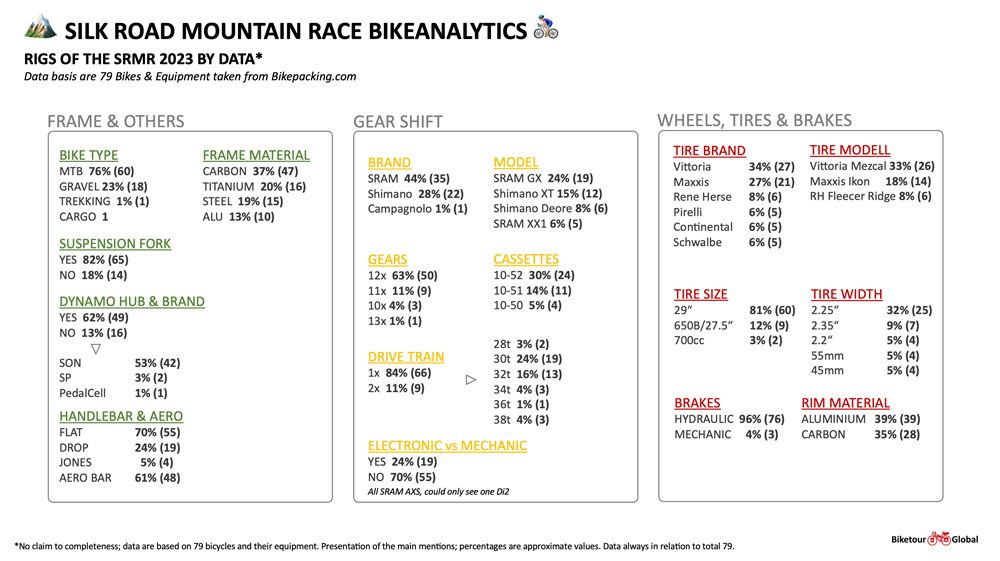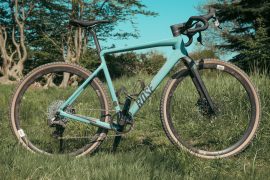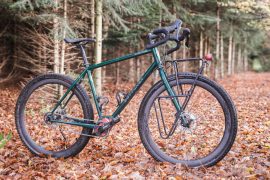Since this morning, more than 170 participants are once again on their way to cycle through Kyrgyzstan from Bishkek. This year’s Silk Road Mountain Race is even longer and goes even higher. There are almost 2,000 km to cover and around 30,000 metres of altitude to climb.
With around 1,548 metres of elevation gain over 100 km, the Silk Road is not a ‘board’ among the ultra races according to the numbers. But here in Kyrgyzstan, the altitude, the tracks, the temperatures and the weather make this race one of the most challenging in the world. And let’s not forget the poor infrastructure and the actual loneliness in the middle of the Kyrgyz mountains. This is mentally and physically draining for the riders and makes the Silk Road a very special kind of adventure.
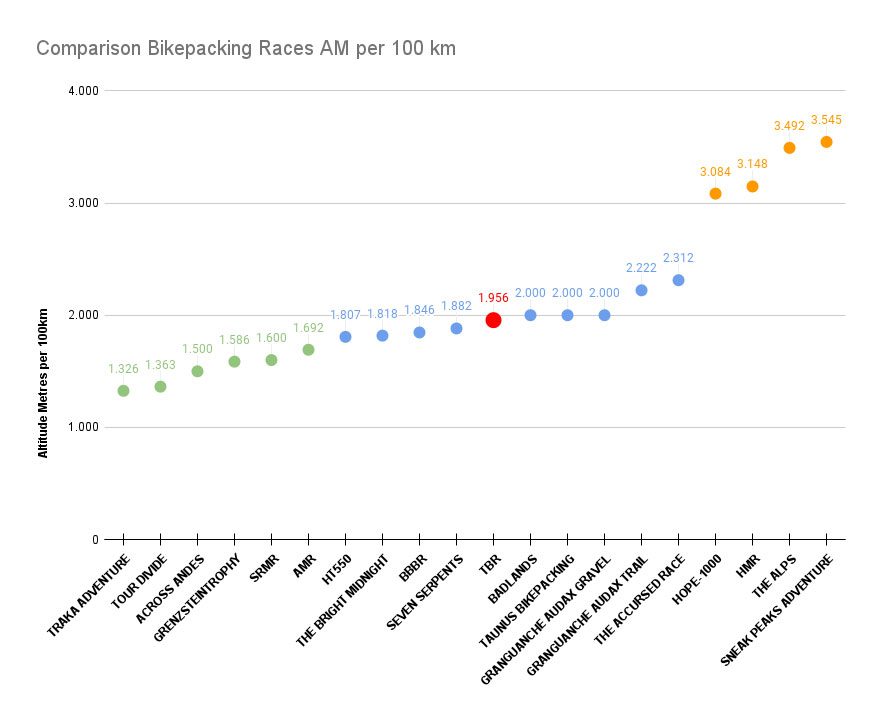
As every year, I took another look at the participants’ bikes and analysed them in terms of their equipment and features.
The basis for this is once again the excellent work of the colleagues from Bikepacking.com, who this time put together almost 100 bikes.
And since it’s been asked again and again: maybe I’ll do another analysis of the finishers’ bikes. I have already done this for the last Atlas Mountain Race and of course there are no or only very small differences to the overall evaluation.
Evaluation of bikes Silk Road Mountain Race 2024
Interestingly, there were a few changes compared to the previous year.
As usual, carbon is the leading frame material, but steel has fought its way into second place and is used more than titanium.
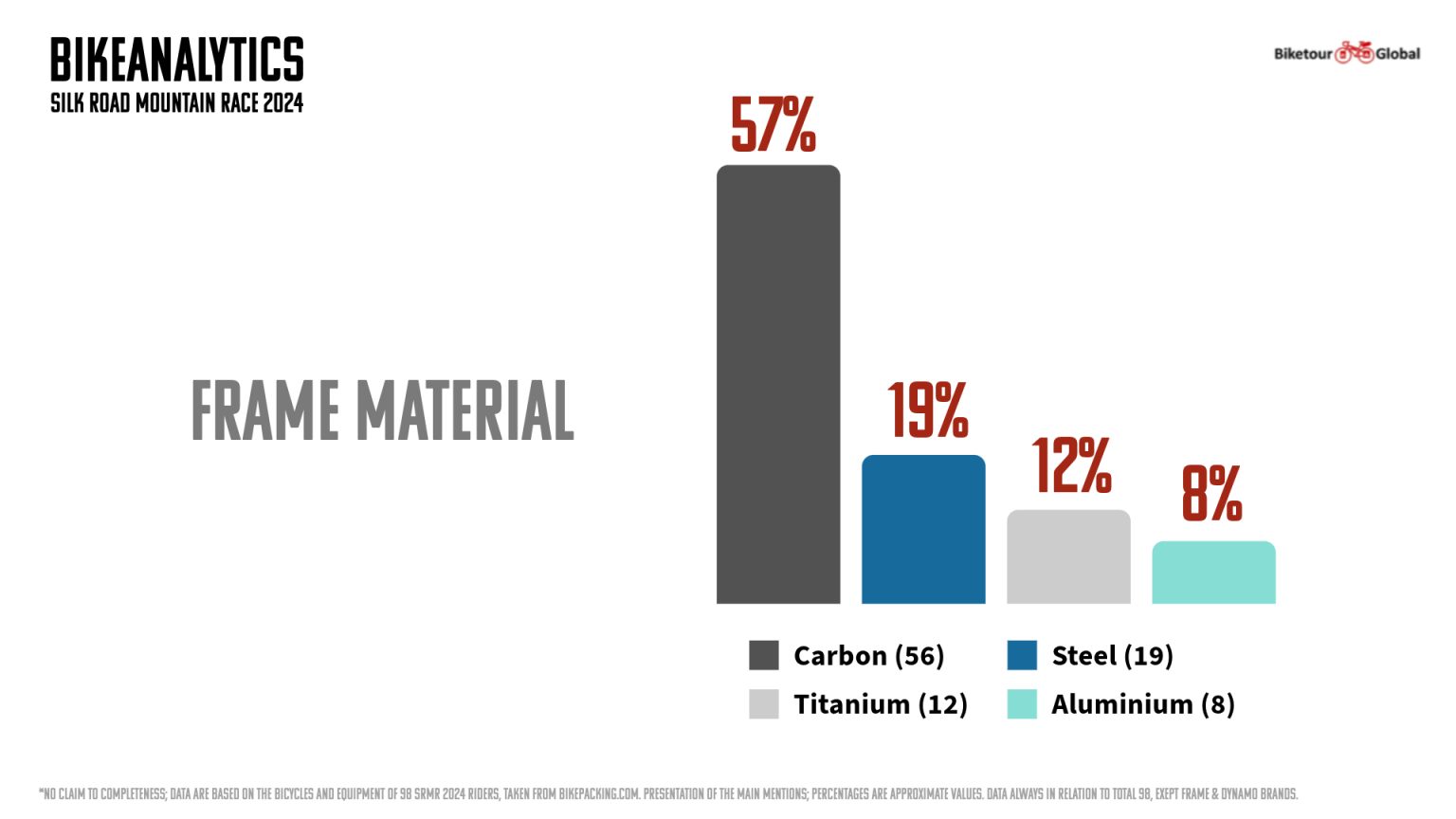
Most of the participants have realised that suspension is a good idea in Kyrgyzstan: 90% ride with a suspension fork and 18% even use a Fully.
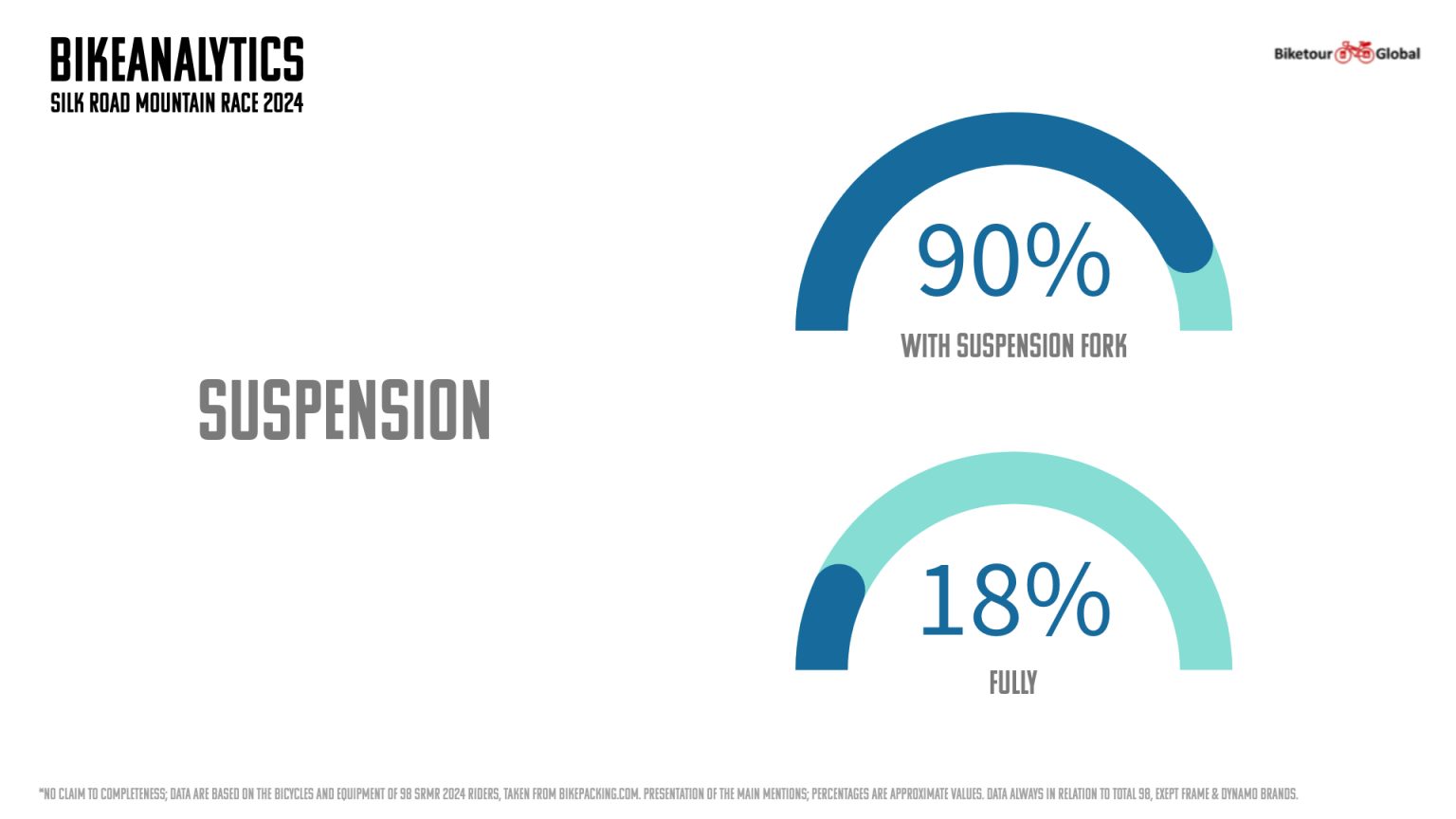
There are hardly any surprises when it comes to handlebars, with the majority using flat bars and aero attachments. 19% use a drop bar. I would probably ride a drop bar again next time, simply because it’s better for my hands and arms.

When it comes to power supply, 53% use a hub dynamo. That’s less than last year, when the proportion was still over 60%. There is no change in the dynamo brand: SON is the measure of all things.

What did surprise me, however, was the choice of gear brand: SRAM was usually in the lead here. Last year, the American share was 44% and the Japanese 28%. This year there is a tie between Shimano and SRAM.

The Shimano XT leads in terms of model, ahead of the SRAM GX.
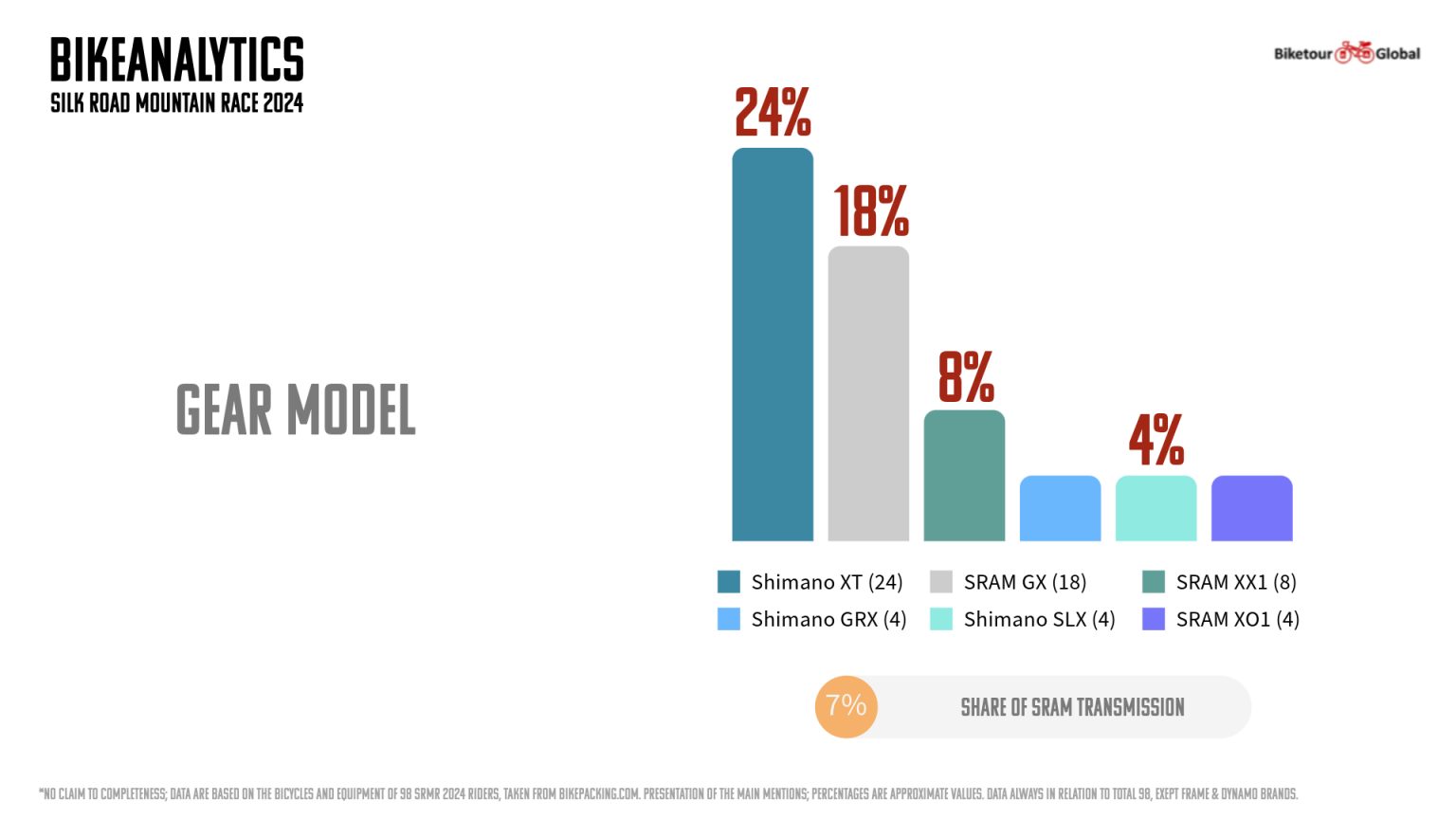
26% are travelling with electronic shifting. That is two percentage points more than in 2023. 7% use a SRAM transmission shifting system.
The majority use 12 gears for the drivetrain. Only 10% are travelling with 11. Accordingly, the 12-speed cassettes with 10-51 / Shimano) and 10-52 (SRAM) are leading the way.

On the cranks, 92% rely on a 1x drivetrain. And depending on the terrain, 30 or 32-speed cranks are usually fitted, which guarantee a good gear ratio.
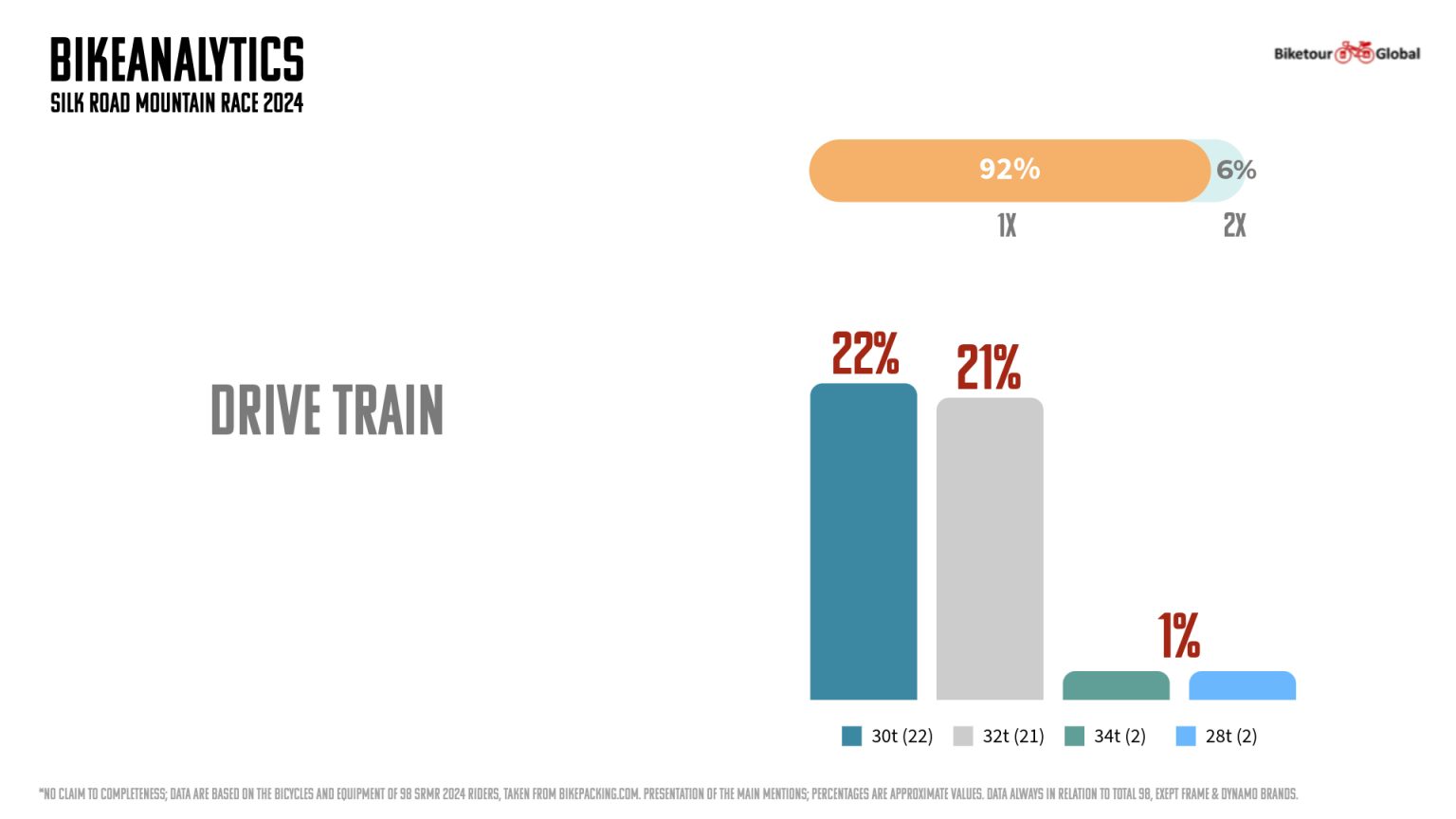
They ride on 29-inch wheels. These have now really become established. Only 6% are still travelling on 700cc. 27.5/650B no longer really plays a role. Carbon rims are favoured, with 67% of participants riding them. This means that carbon has also prevailed here, where last year it was neck-and-neck with aluminium in terms of rim material.
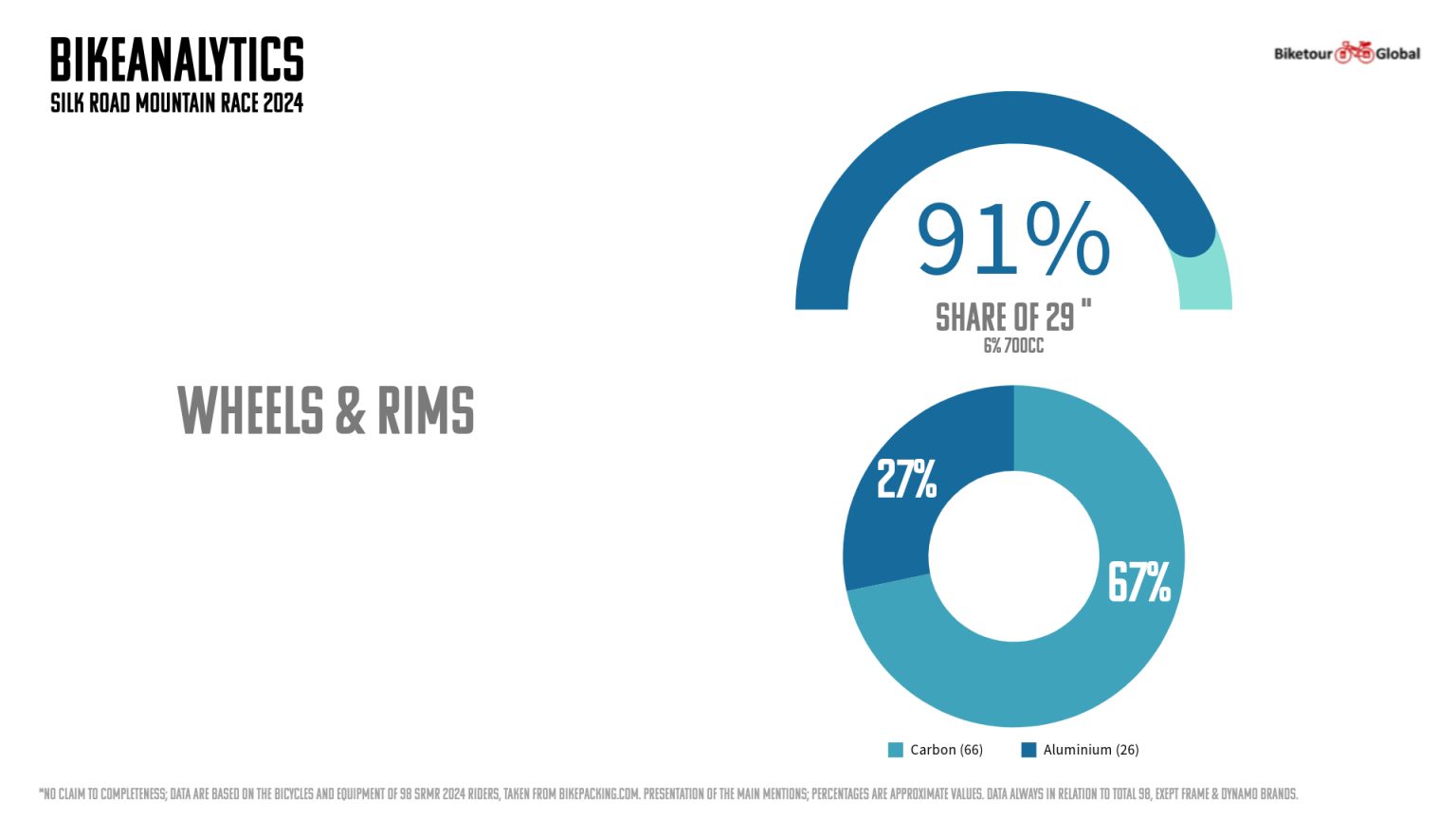
In terms of tyre choice, the Vittoria Mezcal continues to be the most used tyre, ahead of the Rene Herse Fleecer Ridge and the Maxxis Ikon. This means that Rene Herse has improved by one percentage point compared to last year.

There has also been a change in tyre width: last year, 2.25 inch tyres were in the lead, but now 2.25 inch and 2.35 inch tyres share first place with 28%.

Let’s move on to the bike brands: as last year, Canyon is the most popular brand. Specialized comes in second place, followed by Trek. The Americans from Trek have thus moved up into the top 3, whereas last year they were at the back of the pack.
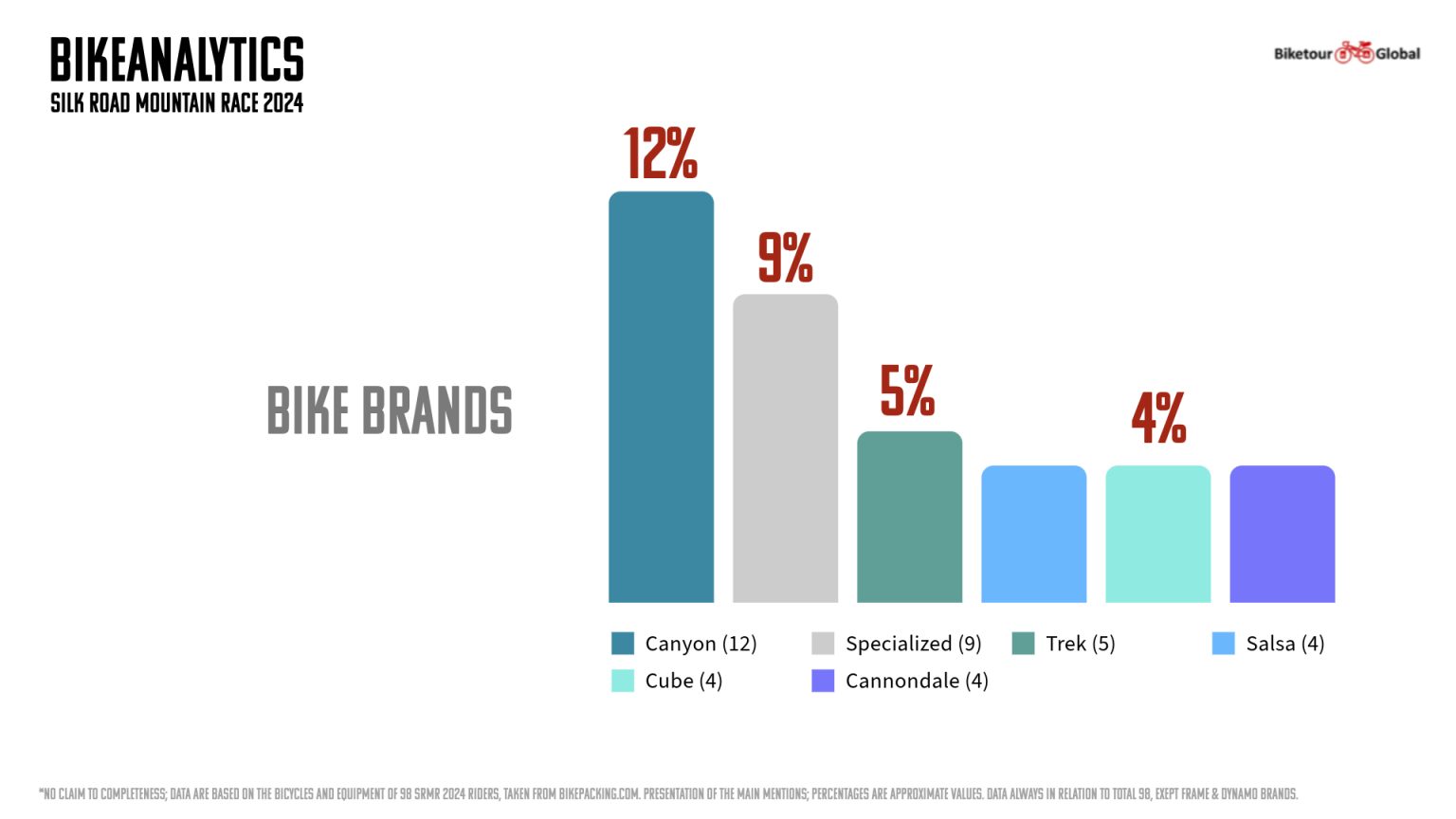
We see a clearer change in the Bikepacking bag brands: Tailfin has now moved to the top, ahead of Apidura. Together with Restrap, the British manufacturers dominate the market. Ortlieb has moved into the top 3 compared to last year and is in 3rd place with 21%.

The Tailfin System, i.e. Aeropack, is used by 22% of cyclists. This is the same as last year.
Finally, some demographics: the Silk Road Mountain Race has become younger this year. The average age is 37.5 years. Last year it was 38.8. The youngest participant is 22 and the oldest 61.
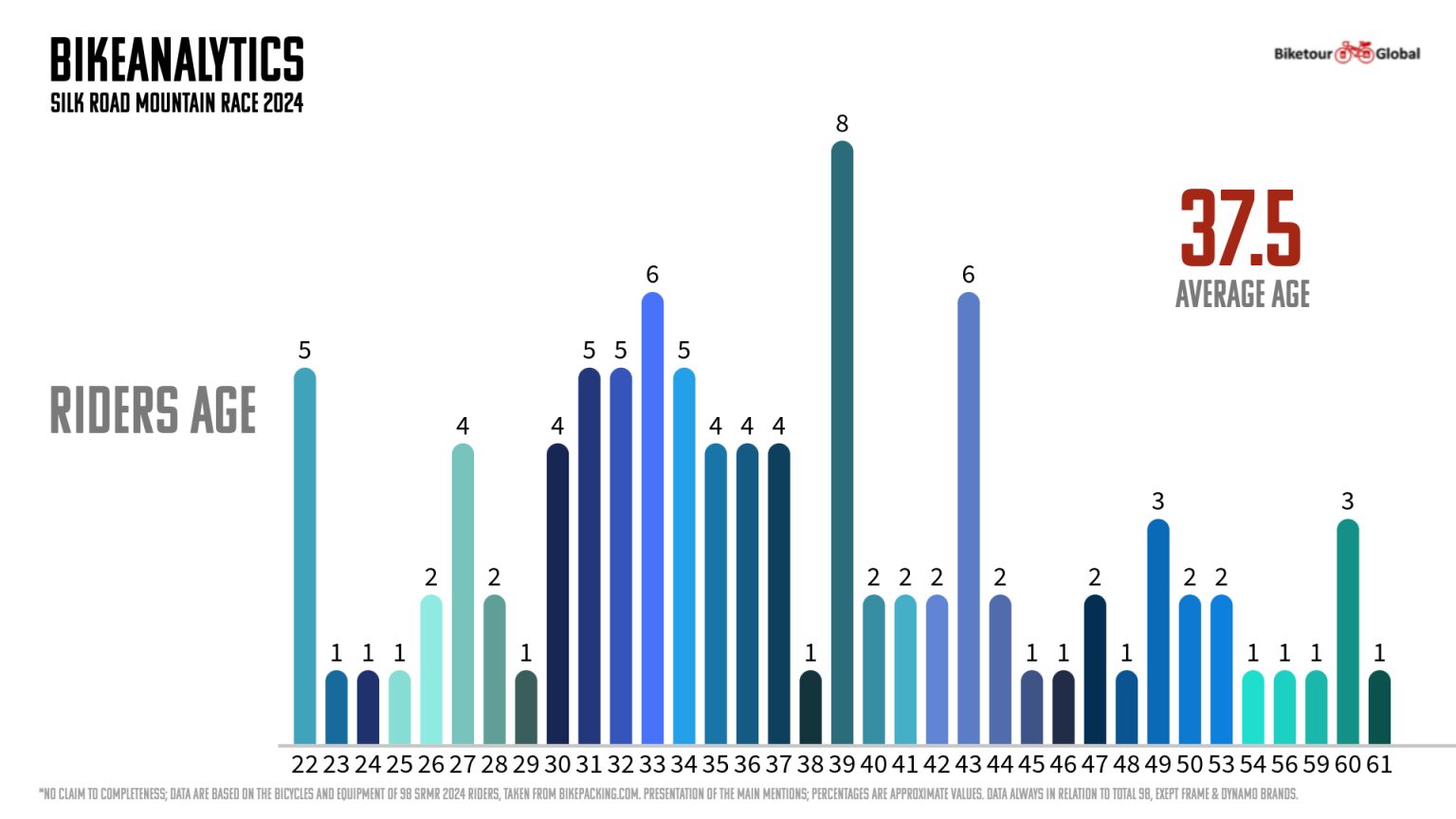
I wish all Silk Road participants a good and safe race and, above all, lots of fun and success!
For comparison, you can find the SRMR Bikeanalytics data from last year here:
